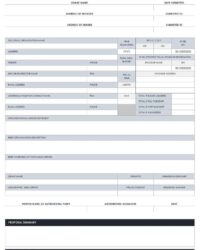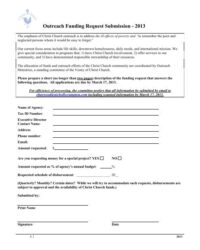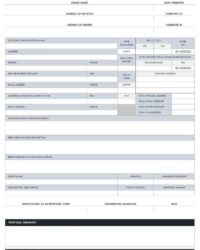Utilizing such models can save significant time and effort, eliminating the need to start from scratch. These models offer valuable insights into successful applications, showcasing best practices and increasing the likelihood of securing funding. They also ensure consistency and completeness, reducing the risk of omitting crucial information. This can be particularly helpful for those new to grant writing or seeking funding from a specific organization for the first time.
Understanding the structure and components of funding requests is critical for successful fundraising. The following sections will explore various aspects of crafting compelling proposals, delving into best practices for each section and offering practical advice for securing financial support.
Key Components of a Funding Request Model
Effective funding requests typically incorporate several key components, each serving a specific purpose in conveying the project’s value and feasibility. Understanding these elements is crucial for crafting a compelling and competitive proposal.
1. Executive Summary:
This concise overview provides a snapshot of the entire proposal, highlighting the project’s key objectives, methodology, and expected outcomes. It serves as the first impression and should capture the funder’s attention.
2. Needs Statement:
This section articulates the problem or opportunity the project addresses, providing context and justification for the requested funding. Supporting evidence, such as statistics or research findings, strengthens the rationale.
3. Project Description:
This detailed explanation outlines the project’s goals, activities, and timeline. It should clearly articulate how the project will achieve its objectives and demonstrate a well-defined plan of action.
4. Budget:
A comprehensive budget outlines all project expenses, demonstrating responsible resource allocation and financial planning. A clear and justified budget enhances the proposal’s credibility.
5. Evaluation Plan:
This section describes how the project’s success will be measured and reported. Measurable outcomes and a clear evaluation strategy demonstrate accountability and contribute to the proposal’s overall strength.
6. Organizational Background:
Information about the applicant organization, including its mission, history, and relevant experience, establishes credibility and builds trust with the funder.
7. Supporting Documents:
Supplemental materials, such as letters of support, resumes of key personnel, and other relevant documentation, can strengthen the proposal and provide additional context.
By incorporating these components, proposals can effectively communicate their value and increase their chances of securing funding.
How to Create a Funding Request Model
Developing a standardized model for funding requests ensures consistency and efficiency in the application process. A well-structured model guides applicants through the essential components of a successful proposal, increasing the likelihood of securing funding.
1. Define Target Audience:
Identifying the intended funding source is crucial. Different funders have varying priorities and requirements. Tailoring the model to specific audiences enhances its relevance and effectiveness.
2. Outline Key Components:
Standard sections, such as the executive summary, needs statement, project description, budget, evaluation plan, organizational background, and supporting documents, should be incorporated. Each section plays a vital role in presenting a comprehensive and compelling proposal.
3. Develop Clear Instructions:
Provide concise and unambiguous guidance for completing each section. Clear instructions ensure consistency and minimize ambiguity for applicants.
4. Incorporate Examples:
Illustrative examples of successful applications can provide valuable insights and best practices. Demonstrating effective writing techniques and content organization enhances the model’s usability.
5. Design a User-Friendly Format:
A visually appealing and accessible format facilitates ease of use and comprehension. Logical organization and clear formatting contribute to a positive user experience.
6. Test and Refine:
Pilot testing the model with potential users identifies areas for improvement and ensures its practicality. Feedback from users informs revisions and enhances the model’s effectiveness.
A robust model streamlines the application process, ensuring consistency and completeness while increasing the probability of securing funding. Careful planning and attention to detail are essential for developing a valuable and effective resource for applicants.
Pre-designed frameworks for grant applications offer a valuable resource for securing funding, providing structure and guidance throughout the proposal development process. Understanding the key components, such as the executive summary, needs statement, and budget, is crucial for crafting a compelling and competitive application. Leveraging these models can significantly streamline the process, saving time and increasing the likelihood of success.
Effective grant writing requires careful planning, attention to detail, and a clear understanding of funder priorities. By utilizing available resources and adhering to best practices, organizations can maximize their chances of securing the necessary financial support to achieve their objectives. The ability to articulate a clear vision, demonstrate a well-defined plan of action, and showcase measurable outcomes is essential for impactful and sustainable growth.


